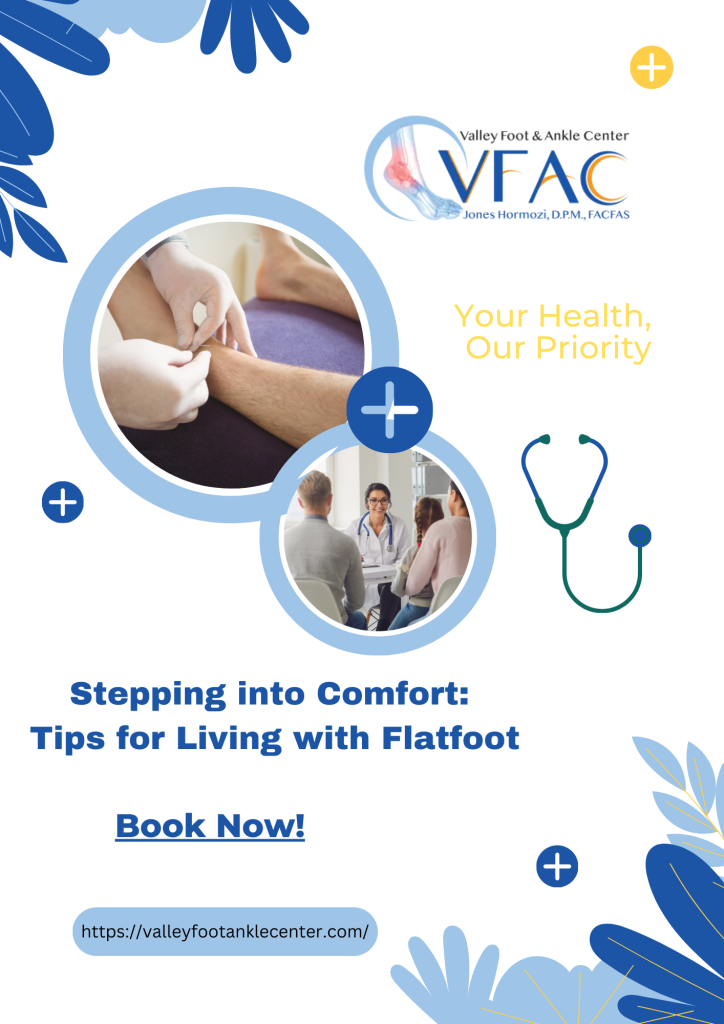Pes planus, commonly referred to as flatfoot pes planus, is a condition characterized by the collapse of the arches in the feet, leading to the entire sole coming into contact with the ground. The arches of the feet collapse, resulting in the whole of the sole making contact with the ground. Condition in which the arches of the feet collapse, resulting in the entire sole making contact with the ground. A condition that affects the arches of the feet, causing them to touch the ground entirely when standing. Living with flat feet can pose challenges, from discomfort to difficulty engaging in physical activities. Let’s delve into tips and strategies to assist individuals with flat feet to find comfort and navigate daily life. We will also touch upon the importance of seeking professional guidance from specialists, such as podiatrists and orthopedic foot specialists.
Understanding Flatfoot
Before delving into tips for managing flatfoot, it’s crucial to have a basic understanding of the condition. Flatfoot occurs when the arches of the feet collapse, causing the entire sole to make contact with the ground. This can result from genetics, injury, or the natural aging process. People with flat feet may experience pain, swelling, and fatigue in the feet, particularly after prolonged periods of standing or walking.
Tips for Everyday Comfort

Choose supportive footwear. Managing flatfoot begins with selecting the proper footwear. Choose shoes that provide ample arch support and cushioning. Consider exploring brands dedicated to orthopedic footwear, as they frequently design shoes with features that deliver additional support and stability.
Custom Orthotics: Consider getting custom orthotic insoles prescribed by a podiatrist. These insoles are designed to provide individualized support based on the specific needs of your feet. They aid in distributing weight more uniformly and alleviate discomfort associated with flatfoot.
Maintain a Healthy Weight: Excess weight can exacerbate the symptoms of flatfoot. Maintaining a weight that is conducive to good health helps minimize strain on your feet and improves overall mobility. Seek advice from a healthcare professional to create a well-rounded diet and exercise regimen.
Stretching Exercises: Integrate stretching exercises into your daily regimen to enhance flexibility and reduce foot tension. Focus on calf stretches, toe curls, and ankle circles to improve the range of motion in the affected areas.
Avoid Prolonged Standing: If possible, avoid long periods of standing or walking. When standing is necessary, shift your weight from one foot to the other and take short breaks to relieve pressure on your feet.
Professional Guidance
While these tips can significantly improve comfort for those with flatfoot, it’s essential to consult with healthcare professionals for personalized advice. A podiatrist can assess your condition, recommend appropriate interventions, and guide long-term management. Additionally, an orthopedic foot specialist can offer insights into more advanced treatment options, such as surgical procedures, if necessary.
When to See a Podiatrist or an Orthopedic Foot Specialist
If you consistently encounter pain, swelling, or challenges with mobility despite trying the aforementioned tips, it’s time to seek professional help. A podiatrist specializes in diagnosing and treating conditions related to the feet, including flatfoot. Likewise, an orthopedic foot specialist possesses expertise in addressing musculoskeletal issues, offering a comprehensive approach to managing flatfoot.
Living with a flatfoot doesn’t have to mean sacrificing comfort and mobility. You can achieve increased comfort and improved well-being by incorporating the right tips and tricks into your daily routine and seeking guidance from professionals like podiatrists or orthopedic foot specialists. Remember, proactive management and a collaborative approach with healthcare providers are key to successfully navigating the challenges posed by flatfoot.

